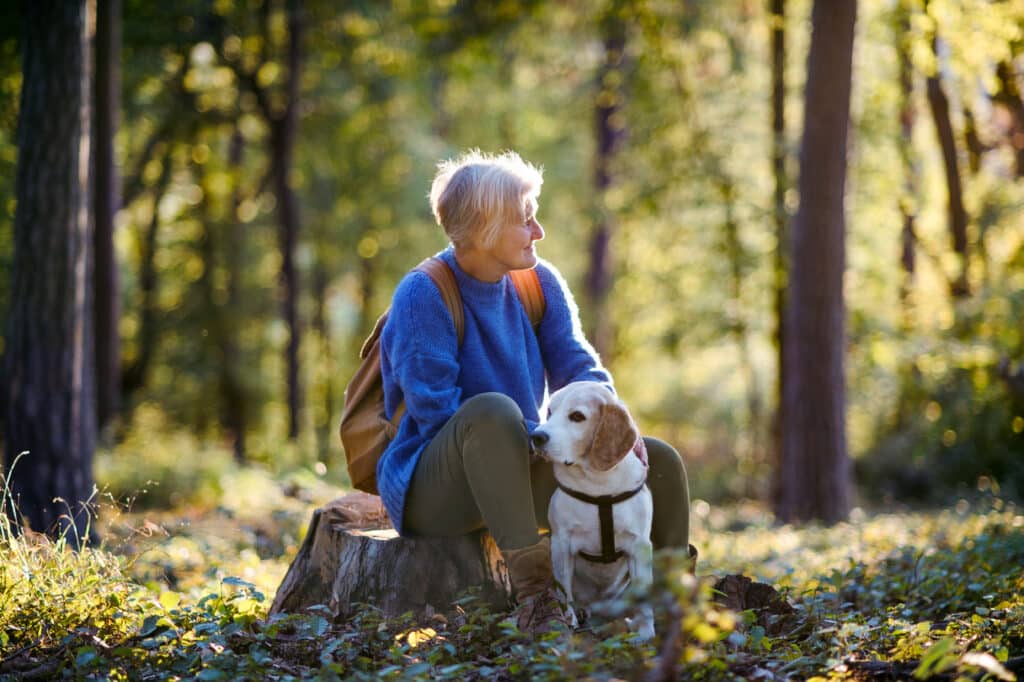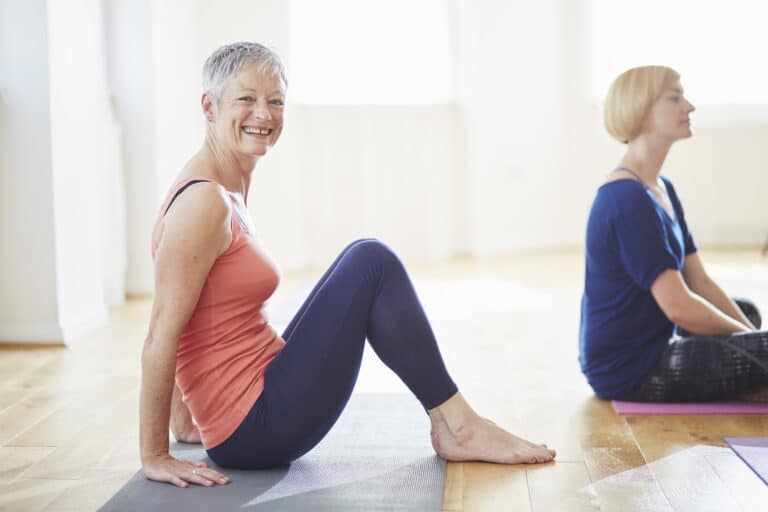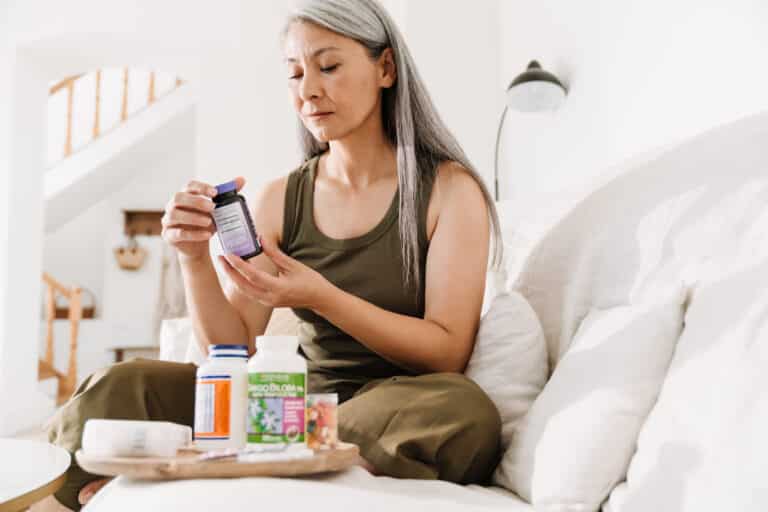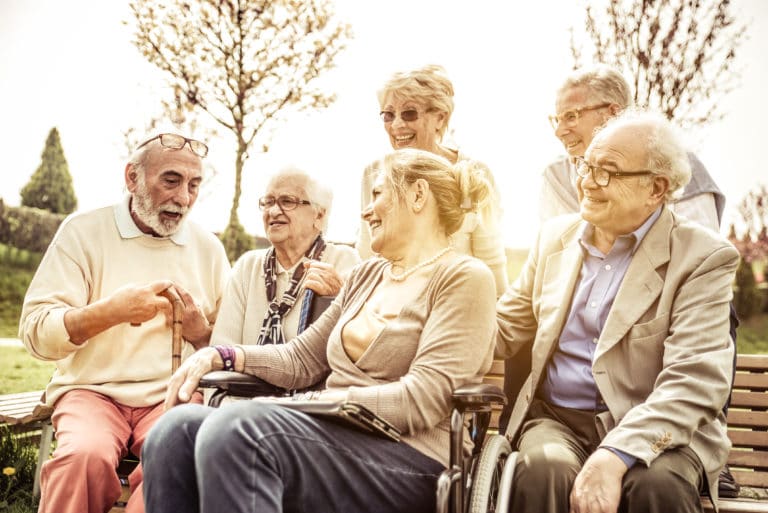Chronic obstructive pulmonary disease (COPD) is a common lung condition that affects millions of older adults worldwide. While it can be a challenging condition to live with, treatment is widely available for their COPD, and they can still lead a fulfilling life. But what does that treatment look like?
With the proper care and support, COPD can be treated and managed. As a physical therapist who has worked with many adults living with COPD, I’m always excited to share important information about the treatment and rehabilitation of COPD for adults of all ages.
In this article, we will discuss the treatment options for older adults with COPD, standard rehabilitation programs, and self-care strategies to help improve physical and mental health.
What is COPD?
Chronic obstructive pulmonary disease (COPD) is a lung condition that causes breathing difficulties, coughing, wheezing, and chest tightness.1
COPD is often associated with other health problems, such as heart disease and lung infections. It is more prevalent among older adults, who may face additional challenges in managing their symptoms and maintaining their quality of life.
As we age, our lungs become less elastic and more disease-prone. Smoking, air pollution, occupational exposure, and genetic factors can also contribute to the development and progression of COPD.
Having worked with many older adults who live with COPD, I know the most significant focus of medical treatment and rehabilitation is often on maximizing quality of life. This is because there is no cure for COPD available today. For this reason, older adults living with COPD are often encouraged to focus on maintaining and improving their physical function within the limits of their lung health.
Treatment Options for COPD
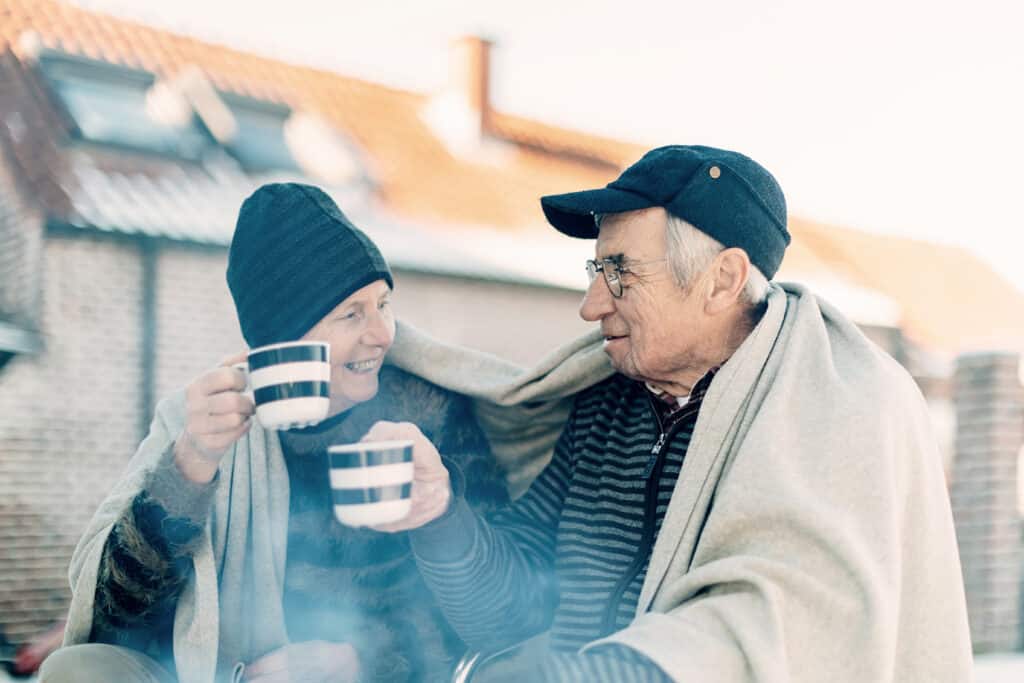
Treatment aims to relieve symptoms, prevent complications, and improve the quality of life of older adults with COPD. The treatment plan may vary depending on the severity and stage of the disease and your individual needs and preferences.
Here are some of the most common, widely available treatment options.
Medication
Proper medication can help reduce inflammation, relax the airways, and ease breathing. There are different kinds of medicines for COPD, such as bronchodilators, corticosteroids, antibiotics, and mucolytics. Some medications can be taken orally, while others can be inhaled using an inhaler or a nebulizer.
Your doctor will prescribe the appropriate type of medication for you. As with most medicines, following their instructions to use medicine safely is essential. If you experience any adverse reactions, consult your doctor immediately.
Oxygen Therapy
Oxygen therapy can help increase the amount of oxygen in your blood and improve oxygen delivery to the tissues. This intervention can be delivered through a nasal cannula, a face mask, or a portable oxygen concentrator.
Oxygen therapy can help reduce shortness of breath, fatigue, and headaches. Your doctor will determine the need and appropriate duration of oxygen therapy use for you. Always follow the safety precautions and guidelines for using oxygen therapy at home.
Surgery
Surgical intervention can be an option for some patients with severe COPD who do not respond well to other treatments. Different procedures can help remove damaged lung tissue, reduce lung volume, or transplant healthy lungs from donors.
Surgery can improve some older adults’ lung function, breathing, and quality of life. However, surgery can also have serious complications. It is usually reserved for patients who have exhausted all other treatment options. Your doctor will evaluate your eligibility and surgery suitability based on your unique needs and situation.
Other treatments may be available or in development to suit your unique situation better. Talk to your doctor regularly and discuss your treatment options and goals. Your doctor will help you find the best treatment plan and monitor your progress and response to treatment.
Rehabilitation Programs for COPD
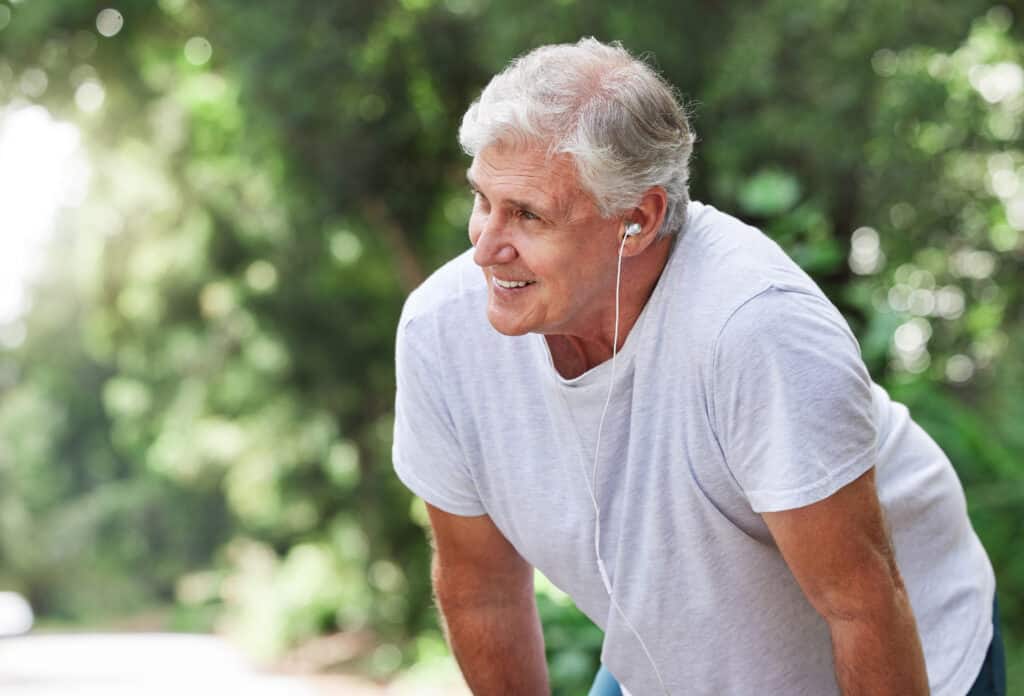
In my experience as a physical therapist working with older adults, I have generally found that patients receiving both medical treatment and rehabilitation for their COPD have better outcomes.
For this reason, I always encourage older adults with COPD to seek rehabilitation alongside their treatment programs.
Rehabilitation means restoring or improving the physical and mental abilities of people affected by a disease or injury. For older adults with COPD, rehabilitation can help them cope with their condition, engage in more activities, and enhance their quality of life.
Pulmonary Rehabilitation
One of the most effective and recommended rehabilitation programs for COPD is pulmonary rehabilitation.
Pulmonary rehabilitation or pulmonary therapy is a comprehensive and individualized program that includes education, exercise, breathing techniques, nutritional counseling, and psychosocial support.2
Pulmonary rehabilitation can help older adults with COPD to:
- Improve their lung function and oxygen levels
- Reduce their symptoms and frequency of exacerbations
- Increase their exercise capacity and endurance
- Decrease their anxiety and depression
- Enhance their self-management and coping skills
- Improve their overall well-being and quality of life
Pulmonary rehabilitation is usually provided by a team of health professionals, such as pulmonologists, respiratory therapists, nurses, physiotherapists, dietitians, and psychologists.
Your team will assess your needs and goals to design a personalized plan for your condition. The plan will include which interventions are most appropriate for you, how often they’re done, and how they will be provided.
Pulmonary therapy can be delivered in different settings, such as hospitals, outpatient clinics, community centers, or your home. The typical length of a pulmonary rehabilitation program depends on the stage and severity of your condition, and the activities will vary depending on your personal goals.
In pulmonary physical therapy, some of the most common activities include breathing techniques, activity training, and cardiovascular exercise to improve physical function and overall health.
Breathing techniques
These therapeutic techniques help to increase the amount of oxygen you get through breathing and help to manage feelings of anxiety that accompany COPD.
One of the most critical breathing techniques is pursed lip breathing, which involves breathing in through your nose and slowly breathing out through pursed lips—like you do when whistling.
This technique increases pressure in your lungs and improves oxygen flow. It can also be helpful to promote a sense of calm relaxation.
Activity training
This involves practicing activities important to you, focusing on energy conservation and breathing techniques to improve endurance. This technique can require large amounts of time and effort, but it can be one of the most effective treatments to improve function in your everyday life.
Cardiovascular exercise
This is any structured exercise that gets your heart and lungs working harder than usual, such as walking, cycling, or taking exercise classes.
Consistently exercising your heart and lungs improves how efficiently your lungs can take up oxygen and pump the oxygen through your blood to the rest of your body, improving endurance and energy levels during your day.
Even if you’re not actively engaging in a comprehensive multidisciplinary program, you may still benefit from engaging in pulmonary physical therapy with a physical therapist trained to work with people with COPD.
Pulmonary rehabilitation is safe and effective for older adults with COPD. Numerous studies have shown that pulmonary rehabilitation can improve lung function, reduce symptom severity, and improve quality of life.3
A recent study reported by the COPD Foundation showed that COPD patients who received pulmonary rehabilitation after a hospitalization had a substantial survival benefit compared to those who did not.4
Pulmonary therapy is widely recognized as a standard of care for COPD. However, pulmonary rehabilitation may not be the best fit for every older adult living with COPD. Some of the factors that may affect the participation and outcomes of pulmonary rehabilitation include:
- The stage and severity of your COPD
- The presence of other medical conditions or complications
- Your level of motivation and ability to participate in rehabilitation
- The availability and accessibility of pulmonary rehabilitation programs
- The cost and affordability of the program
Rate of Perceived Exertion: A Method to Measure Your Progress at Home
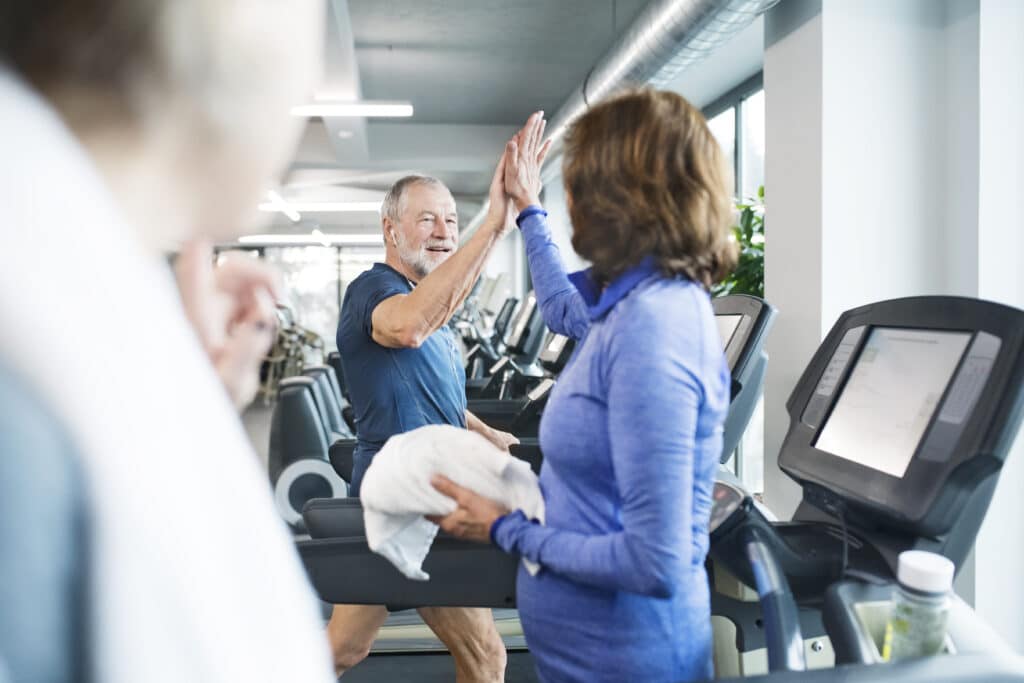
One of the guiding lights of pulmonary rehab is the rating of perceived exertion (RPE) scale, which can be used to estimate shortness of breath and fatigue.5
The RPE scale can help ensure safe and challenging activities during strengthening, cardiovascular, and breathing exercises. The RPE measures exertion and rates your body’s tolerance on a numerical scale based on the amount of effort required during the activity.
In this case, exertion is measured by the difficulty a patient has trying to speak fluidly while doing an activity like walking on a treadmill. For most patients, it’s recommended to exercise at a level between 3 and 4 (moderate to challenging). This might mean you can complete the exercise but cannot do so while speaking more than one full sentence.
Consistency is the Key to Success
While the benefits of pulmonary rehab can be very pronounced, consistency is essential for seeing results. Unfortunately, it can be hard to stay motivated with pulmonary rehab, and many older adults struggle to participate in their home programs.
It’s important to remember why you’re doing rehabilitation in the first place and try to keep yourself motivated by thinking of how rehabilitation can help you return to your favorite activities.
Always consult your doctor before starting pulmonary rehabilitation. Your doctor will help you determine if pulmonary rehabilitation is proper for you and refer you to a suitable program.
You may also need a wellness exam and screening before enrolling in pulmonary therapy to ensure the best outcomes. This can help your care team tailor your program to your needs and goals.
Self-Care Techniques for COPD
Aside from formal medical and rehabilitation programs, there are also some self-care techniques that older adults with COPD can practice at home to ease their symptoms and improve their well-being. Here are a few that I commonly share with my patients.
Controlling Your Breathing
Learning and practicing breathing techniques can help you breathe more efficiently and reduce the feeling of breathlessness that often comes with COPD.
The most common techniques are pursed-lip, diaphragmatic, and coordinated breathing. Talk with your doctor, respiratory therapist, or physical therapist to teach you how to perform these techniques correctly and when to use them.
Managing Your Fatigue and Exertion
COPD can make you feel tired and weak, especially after physical activities. To conserve your energy and prevent overexertion, you can do things like pacing yourself, planning your daily tasks, and using assistive devices to make your activities easier.
You may also benefit from help from your family, friends, or caregivers with specific tasks to help save energy for others.
Quitting Smoking and Avoiding Triggers
Smoking is the leading cause of COPD and can worsen your condition and symptoms. For all older adults, quitting smoking can help you prevent further lung damage and improve your health in almost every way.
It’s also essential to avoid exposure to other triggers that can irritate your lungs, such as air pollution, dust, and smoke. Talk to your doctor for advice and support on how to quit smoking.
Eating a Healthy Diet and Staying Hydrated
Eating a balanced and nutritious diet can help you maintain a healthy weight, strengthen your immune system, and help prevent lung infections.
Focus on foods rich in protein, vitamins, and minerals while drinking plenty of water to keep your body hydrated and to thin the mucus in your lungs.
When possible, limit foods high in fat, salt, sugar, or preservatives, such as fried foods, processed foods, or sweets, as they can increase inflammation and mucus production.
Taking Care of Your Mental Health
COPD can affect your mental health and cause stress, anxiety, depression, or isolation. To cope with these emotions, seek professional counseling, join a support group, or talk to your family and friends.
Many older adults also practice relaxation techniques, such as meditation, yoga, or music therapy, to calm the mind and body. You can also engage in hobbies and activities that make you happy and give you a sense of purpose, such as social time with friends or volunteering.
In my experience, all of these techniques can make a big difference in rehabilitation, mental health, and quality of life.
If you feel confident in yourself in one area but weak in another, talk to your care team to learn how to improve as many areas as possible.
Key Takeaways
- COPD is a lung condition that significantly impacts breathing, primarily in older adults.
- There are diverse treatments to ease symptoms and enhance the quality of life for those affected.
- Medications, including inhalers and steroids, are available to alleviate inflammation and improve breathing.
- Oxygen therapy boosts blood oxygen levels and helps reduce the struggle to breathe.
- While less common, surgical options are considered to improve lung efficiency for severe COPD cases.
- Pulmonary rehabilitation programs offer a tailored mix of exercise, education, and breathing strategies to strengthen lung function and endurance.
- Adopting self-care practices such as avoiding smoke, eating nutritiously, and managing stress plays a crucial role in improving COPD conditions.
- Consistent engagement with treatment plans and rehabilitation exercises is key to long-term management and symptom reduction in COPD.
References
- What is COPD? National Heart, Lung, and Blood Institute (NIH).
- Pulmonary Rehabilitation. American Lung Association.
- McCarthy B, Casey D, Devane D, Murphy K, Murphy E, Lacasse Y. Pulmonary rehabilitation for chronic obstructive pulmonary disease. Cochrane Database of Systematic Reviews 2015, Issue 2. Art. No.: CD003793. DOI: 10.1002/14651858.CD003793.pub3
- Lindenauer PK, Stefan MS, Pekow PS, et al. Association Between Initiation of Pulmonary Rehabilitation After Hospitalization for COPD and 1-Year Survival Among Medicare Beneficiaries. JAMA. 2020;323(18):1813–1823. doi:10.1001/jama.2020.4437
- Cleveland Clinic. COPD: Exercise & Activity Guidelines.

